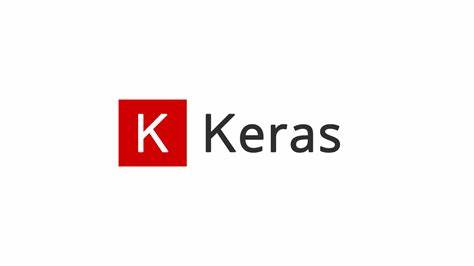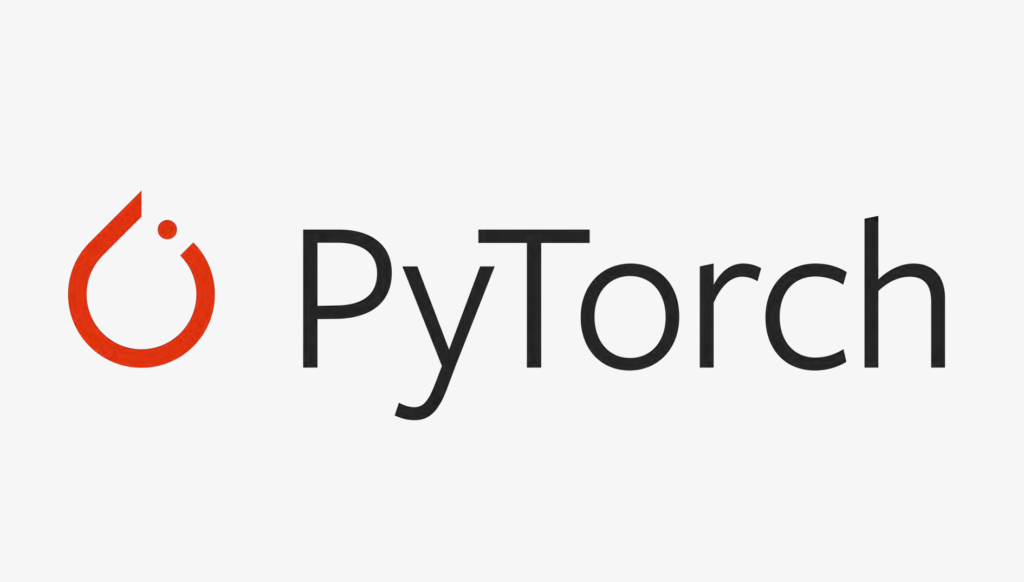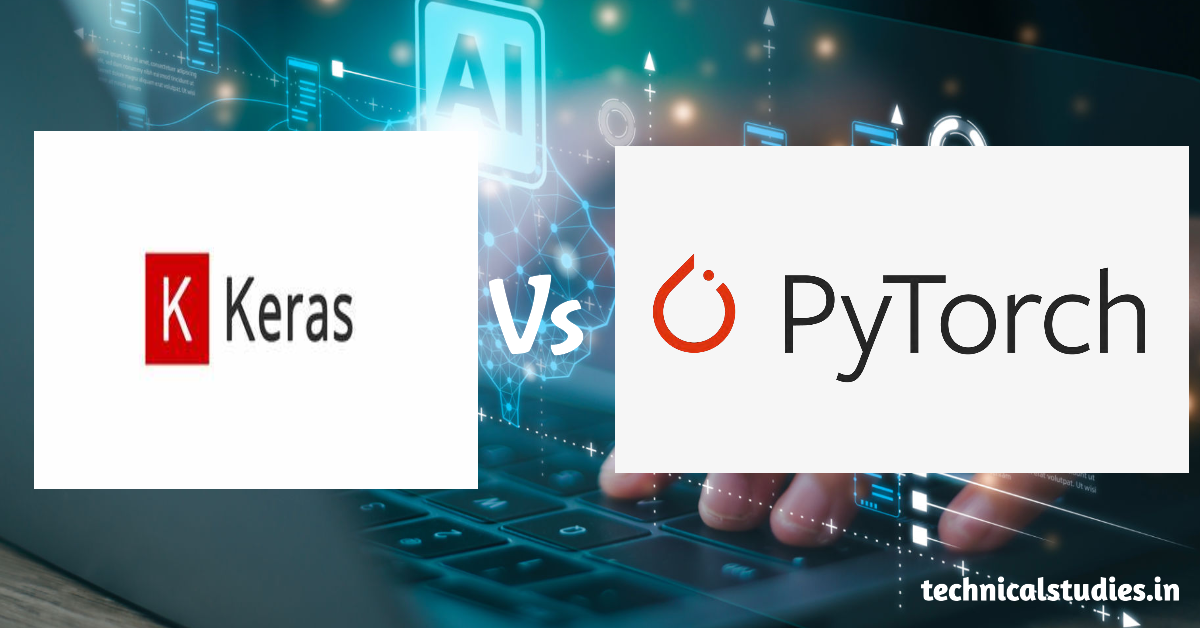Last updated on April 25th, 2025 at 03:51 pm
Keras and PyTorch are both well-liked frameworks in the realm of AI. Essentially, they are utilized to build deep-learning neural networks and AI technologies.
Keras is an open-source neural network platform that can interface with a deep learning library like TensorFlow (or any other) to provide an intuitive experience for users. PyTorch is an open-source machine-learning library with access to low-level APIs for increased control and functionality.
So, which one is better for your projects? You can discover this by learning more about these technologies.
Keras is ideal for developers who wish to design and develop deep learning models rapidly. At the same time, PyTorch is favored by individuals who want to comprehend scientific and mathematical principles in deep-learning neural networks. So, Keras is selected for simplicity and ease of use, whereas PyTorch is preferred for flexibility and more control over the project.
Let’s now understand the profound concepts of Keras vs PyTorch to see which platform is appropriate for you.
The Fundamentals of Keras vs PyTorch
French developer François Cholet created Keras as a straightforward and user-friendly platform for deep learning applications. March 2015 saw the platform’s standalone release. Subsequently, it was purchased by Google and integrated into TensorFlow.
Currently, Keras is a high-level API that acts as an abstraction layer on TensorFlow or other frameworks like MXNet, Theano, or Microsoft CNTK.
Since Keras 3.0, its most recent release, it has additionally supported PyTorch and JAX. It boasts a user-friendly interface, provides access to high-level APIs, and has a wealth of learning documentation.
On the other hand, PyTorch is an open-source software library created by Meta AI research group for designing and deploying neural network technologies. It was released in October 2016.
PyTorch offers access to low-level APIs, providing more control to developers. It is favored in artificial intelligence applications where scientific and mathematical tasks are involved. Compared to Keras, PyTorch is faster and more capable of handling big data sets.
Keras: A High-Level Deep Learning API For Quick Prototyping

As mentioned above, Keras is a high-level API that can interface with machine learning libraries like TensorFlow to provide a streamlined and intuitive experience. It is managed by Google and is the default API for TensorFlow.
If you don’t know, TensorFlow is a full-fledged deep learning library with low-level and high-level APIs and tools to design, train, and deploy neural networks. Primarily, it becomes easier to use TensorFlow (and other machine learning libraries) with Keras.
So, Keras is not a deep-learning library. It is a deep learning API that can run on top of a machine learning library for ease of use. This acts as an abstraction over the complexity of deep learning libraries and caters to users with simplicity.
Thus, TensorFlow is the default backend used by Keras. One can also use any other machine learning library in place of Tensorflow. Keras cannot be used for deep learning tasks without a backend.
Advantages of Keras
Here are some advantages of Keras.
- Keras has a user-friendly API that allows for easy model creation.
- Rapid prototyping allows for experimenting with various structures.
- Its modular structure favors creating complicated models.
- Backend flexibility supports many backends, including TensorFlow, Theano, JAX, PyTorch, and CNTK.
- Pre-trained models provide speedier development.
- An active community for support and resources.
- GPU support allows for faster training.
- Clear documentation facilitates learning.
- Better debugging utilities than tensorflow.
Disadvantages of Keras
Keras also has several disadvantages, such as its restricted versatility.
- It has lower control over low-level APIs compared to TensorFlow.
- It is not suitable for large-scale models, and its performance is influenced by the backend.
- Keras’s error warnings are not so helpful.
Use Cases of Keras
Deep learning framework Keras is well known for its effectiveness and ease of use. It is used in image creation, image segmentation, object detection, image processing, and image classification.
Keras demonstrates its adaptability across multiple deep learning domains by excelling at image classification, segmenting images into meaningful regions, and producing new or modified images.
It is utilized in various tasks in natural language processing systems, such as text classification, text generation, machine translation, and text summarization. Keras’s job is to predict future events by examining past data and identifying irregularities in a dataset.
In addition, Keras is used for various tasks like creating generative models, designing recommendation systems, analyzing medical images, etc.
PyTorch: A Low-Level and Flexible Deep-Learning Library with Excellent Debugging Capabilities

As mentioned, PyTorch is an open-source machine-learning library developed by the Facebook team. PyTorch was released in October 2016 and is mostly utilized for developing deep learning applications. It sits on the top of the Torch library and gives access to the low-level environment.
Anyone can use it for free because it is released under an open-source license. Unlike Keras, PyTorch is a complete library that can design and train deep-learning models. It can handle large-scale data sets and offers more flexibility and power than Keras.
PyTorch is popular among individuals who wish to use low-level features and get more control over their projects.
Advantages of PyTorch
Let’s now discuss the advantages of PyTorch.
To begin with, PyTorch uses dynamic computation graphs for its operations, providing great flexibility for debugging and analysis. Python developers will find the platform more user-friendly because it is designed in Python and features a Pythonic interface.
The learning curve is shortened for Python developers because PyTorch provides access to Python’s libraries and debugging tools. It is optimized to handle tensor operations on CPUs and GPUs efficiently and can train across multiple GPUs and other devices.
In addition to having a robust and engaged community and educational materials, PyTorch is supported widely by Facebook.
Disadvantages of PyTorch
While PyTorch has several advantages, there are some drawbacks as well.
Despite its growing popularity, PyTorch is still a relatively new technology in this industry when compared to more established libraries like TensorFlow. This has an impact on the availability of learning resources and community support.
While TensorFlow offers built-in visualization features, PyTorch does not. In addition, one can face challenges when deploying PyTorch models to production environments, so it is popular among researchers.
Use Cases of PyTorch
PyTorch’s versatility and efficiency make it useful in a multitude of applications. Now, let’s talk about a few of its applications.
It is used for various tasks in computer vision, such as image classification, image segmentation, image generation, object detection, style transfer, etc.
PyTorch is used in reinforcement learning to teach machines to perform certain tasks, such as playing games. It helps develop intelligent control systems for robots.
PyTorch’s functions in Natural Language Processing include grouping text, translating text between languages, condensing lengthy texts, and identifying and categorizing textual items.
PyTorch is also used to create Generative Adversarial Networks and Variational Autoencoders. In addition, PyTorch is also used in medical and financial fields for data analysis, fraud detection, etc.
Difference Between Keras and PyTorch
Thus far, user-friendliness is the primary distinction between PyTorch and Keras, the latter of which is an end-to-end deep-learning library.
Keras has high-level APIs and provides a more straightforward and surface-level experience, while PyTorch offers access to low-level APIs to let developers customize their projects efficiently.
In addition, PyTorch is faster than Keras and can operate large datasets smoothly, but Keras is slower and can face challenges while processing large data sets.
Now, let’s compare Keras and PyTorch side by side so that you can understand them better.
Comparison Table for Keras vs PyTorch
| Aspects | Keras | PyTorch |
| API level | Keras has high-level APIs and performs as a sophisticated layer on TensorFlow. | PyTorch offers a low-level API, providing better control and customization options to the developer. |
| Speed | It operates slower than PyTorch. | PyTorch is faster than Keras. |
| Ease of use | Keras is easier than PyTorch as it requires less coding than PyTorch. | PyTorch is complex compared to Keras since it requires multiple lines of code for different tasks. |
| Debugging | Debugging in Keras is challenging. | It is easier to debug a PyTorch model than Keras. |
| Popularity | Keras is more popular than PyTorch. | PyTorch is less popular than Keras. |
| Community | Keras’s community support is limited. | PyTorch has extensive community support. |
| Backend configuration | Keras needs a backend such as TensorFlow, CNTK, Theano, or PyTorch. | No backend is needed. |
| Architecture | It boasts a simple architecture, so it is easy to understand and use. | The architecture is complex, making it difficult to understand and use. |
When to use Keras vs PyTorch
The choice between Keras and PyTorch depends on your expertise in the field and the requirements of your business. From the above discussion, it is obvious that Keras is easier to use than PyTorch, but both are strong and popular machine-learning technologies that will advance in the future.
If you want to perform some general deep learning tasks such as text classification, image classification, building simple neural networks, etc., I would recommend going with Keras. It can handle such tasks efficiently and will be easier to use than PyTorch.
Also, Keras is a good option for programmers who want to experiment and prototype a model quickly. People who are new to deep learning and do small-scale projects should go with Keras for ease of use.
However, PyTorch will be a better choice if you want low-level control and deeper customization in your deep learning models. It will offer more flexibility and allow you to build intense applications accurately.
For large-scale applications, flexibility, and better control over the project, PyTorch is the right choice.
The Bottom Line
Keras and PyTorch are both popular and robust machine learning solutions. Keras is ideal for programmers and newcomers who prefer a simple platform for quick operations over smaller deep-learning models.
On the other hand, PyTorch is suitable for data scientists, analysts, mathematicians, and engineers who need a scalable platform to process large datasets. It bestows more control over neural networks, enabling multiple customization options.
So, the final selection depends on your preferences and project requirements.
If you liked the content of this article, consider sharing it with your friends and colleagues.
FAQ
Is PyTorch better than Keras?
It depends. Both Keras and PyTorch are well-known deep-learning solutions. Keras is easy to use and alluring for newcomers in deep learning. PyTorch is flexible, scalable, faster, and has better debugging capabilities than Keras, making it ideal for developers who need more control over their projects. Now, you can decide which platform is better for your project.
Why do people prefer PyTorch?
Developers choose PyTorch because of its Pythonic nature, flexibility, dynamic computation graphs, strong community, and access to several Python libraries.
Should I learn Keras or PyTorch?
If you are new to artificial intelligence and want to start your journey with small projects, you should learn Keras. However, PyTorch will be the right choice if you prefer scalability, flexibility, and deeper customization and want to deal with large-scale datasets.
Which big companies use PyTorch?
PyTorch is adopted by many popular companies such as Meta, Microsoft, Tesla, OpenAI, Salesforce, Nvidia, Uber, Amazon, etc.
Can I use Keras with PyTorch?
You can use Keras 3 with TensorFlow, JAX, or PyTorch.
Is Keras owned by Google?
Keras was developed by a Google engineer, Francois Chollet. Currently, it is a part of TensorFlow and Google.
Related Articles
Best Artificial Intelligence Courses
Deep Learning Vs Machine Learning
Top 10 Udemy Courses for Aspiring Data Scientists
Discover more from technicalstudies
Subscribe to get the latest posts sent to your email.




